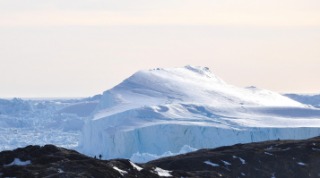 Greenland’s melting ice could end up contributing to rising sea levels much more than had earlier been predicted, according to a new study from the University of Leeds’ School of Earth and Environment.
Greenland’s melting ice could end up contributing to rising sea levels much more than had earlier been predicted, according to a new study from the University of Leeds’ School of Earth and Environment.
Researchers now believe that a side-effect of global warming that was previously overlooked could speed up the melting of Greenland’s ice sheet.
The vast sheet of ice covers 1.7 million square kilometres. If all that ice wound up melting into the sea, global sea levels would rise by up to six metres, which would pose a major risk to many coastal communities.
Although such a catastrophe is highly unlikely, ice losses from the sheet are forecast to contribute towards global sea levels rising by 22 centimetres by 2100. However, the new discoveries, which concern the lakes formed by the melted snow and ice, indicate that the estimate could be far too low.
The research shows that as temperatures across the Arctic increase, Greenland will develop a number of “superglacial” lakes that are likely to spread inland over the years. By 2060, they could even cover double the amount of land they do at present.
Once these lakes reach a certain size they have the ability to drain through the ice down to the base of the ice sheet. The lake water can then assist the melting ice flow more quickly into the sea. Furthermore, they have an even greater impact on the melting of the ice sheet as they absorb the Sun’s heat more than the ice does due to their darker colour.
Lead researcher Dr. Amber Leeson said that superglacial lakes can speed up how quickly the ice sheet melts as well as the speed of the flow, resulting in the thinning of the ice sheet. She explained that this would mean the ice sheet was at a lower elevation and more susceptible to the warmer temperatures, hence more ice could be lost into the sea.
